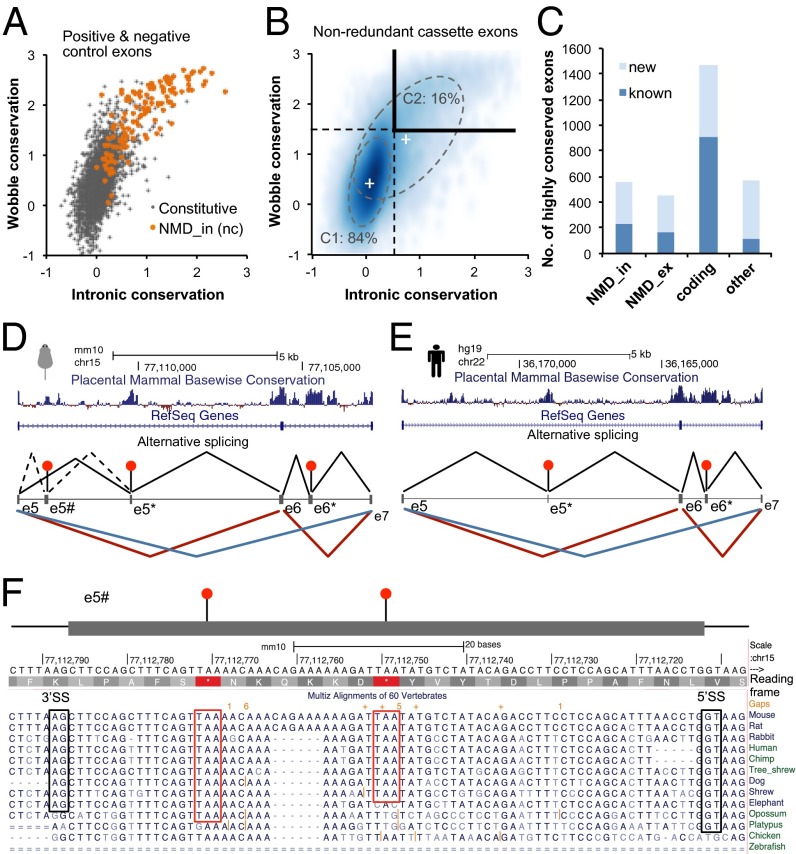Fig. 4.
Identification of cassette exons under evolutionary selection pressure. (A) Conserved NMD_in exons (orange, positive control of functional AS exons) and constitutive exons (gray, negative control of AS exons) can be largely separated by conservation in the wobble positions of the alternative exon (y axis) and flanking intronic sequences (x axis). (B) Distribution of nonredundant cassette exons with respect to conservation scores as displayed by smooth scatter plot. The distribution can be decomposed into two populations (C1 and C2), with the percentage of exons in each population indicated. The “+” signs indicate the mean conservation scores of each population of exons. The dashed lines indicate two SDs from the means, the threshold used to detect strong purifying selection pressure. The first quadrant, marked with the bold black lines, indicates exons under strong purifying selection. (C) The number of nonredundant known and new cassette exons under strong purifying selection. (D and E) AS of the Rbfox2 gene in the region flanking exon 6 in mouse (D) and human (E). Two highly conserved cryptic NMD_in exons (e5* and e6*) were identified de novo in this region. These exons were recently demonstrated to trigger NMD upon inclusion (30). An additional NMD_in exon (e5#) with a very low level of inclusion (<0.1% compared with the major isoform with inclusion of exon 6) was identified in mouse. (F) Cross-species sequence conservation of e5#. Splice sites and predicted premature termination codons (PTCs) are indicated.

